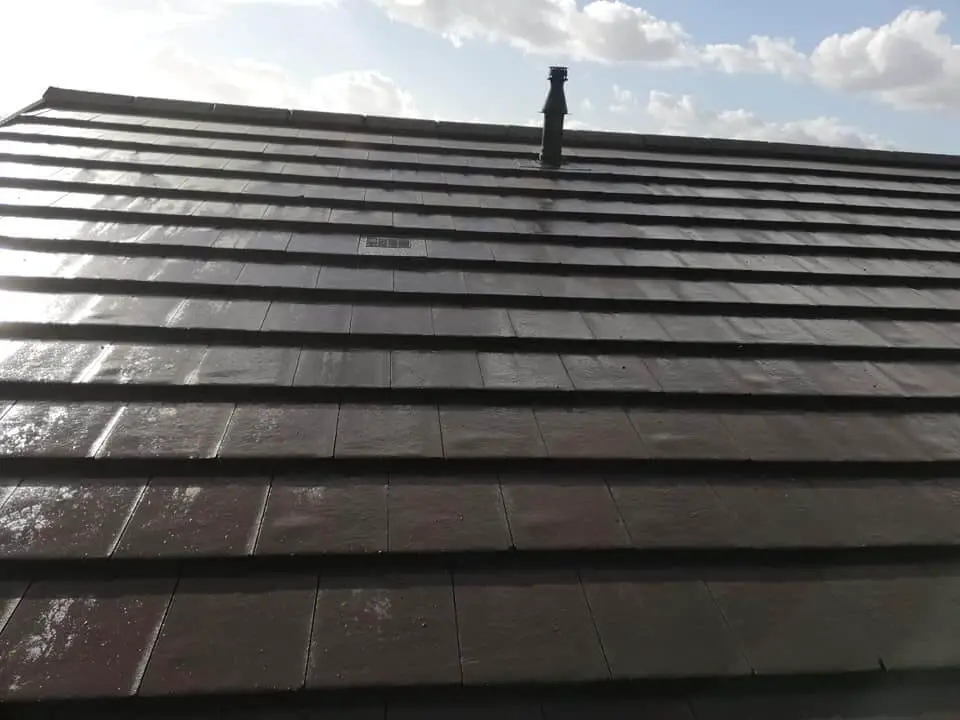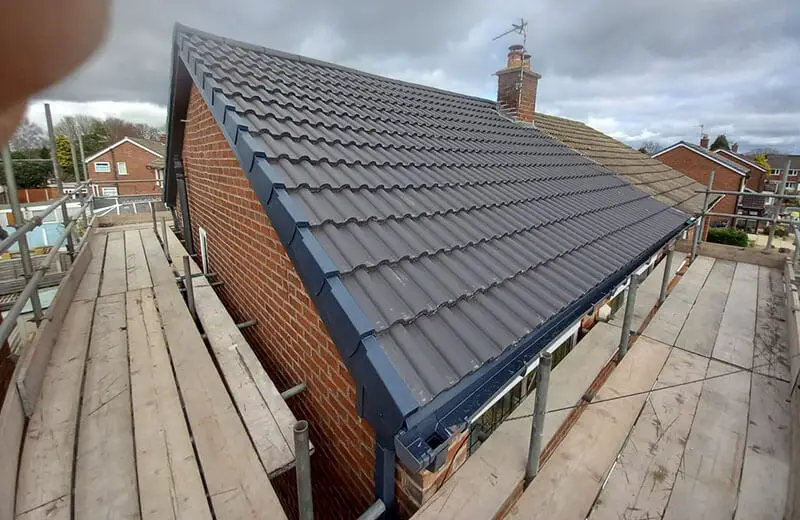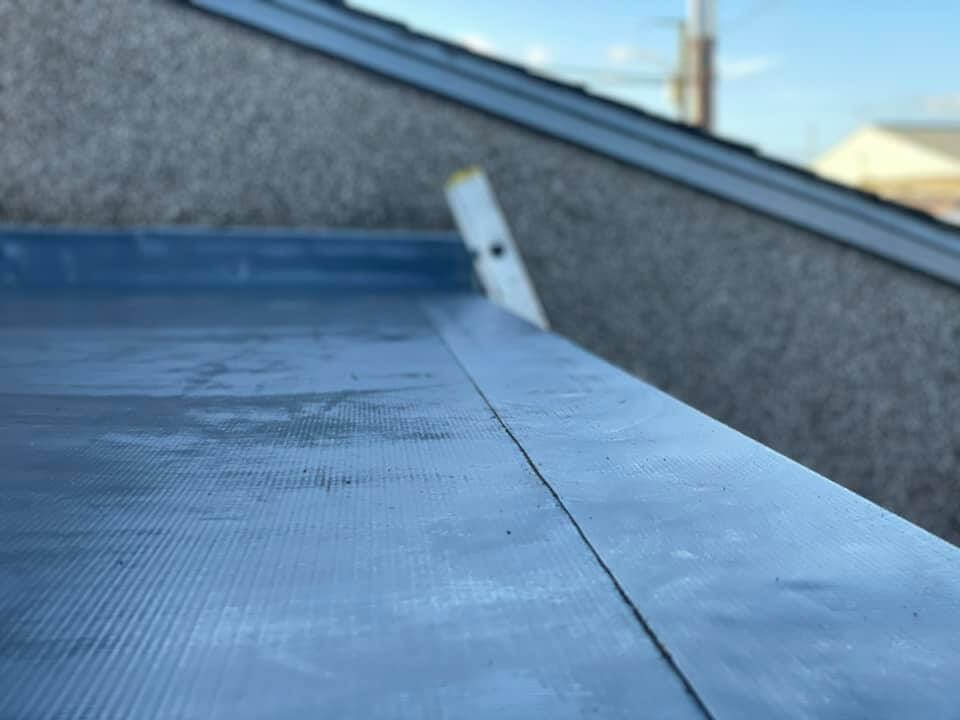Yes, roofing felt can get rained on. I know you think the roofing felt is supposed to keep the roof dry and usually waterproof, but in the last monsoon, it happened to me. Besides, these can get wet when the upper part, the shingles, or other roofing materials get wet, and the water reaches the underlayment; thus, the roofing felt.
In that case, those can be damaged without proper steps, and you might need to replace the entire thing. That’s why I’m here to help you understand what you should do. Let’s get started!
Quick Jump
Reasons behind Roofing Felt Can Get Rained On

I can’t say precisely what happened to your roofing felt, but I know a few reasons behind that and what might have got it wet.
1. Maybe you or your contractor forgot to cover the roofing with a tarp or other protective material during installation, and the felt could get rained on. It is one of the most common issues and happens often.
2. Another issue could be related to installation, which is the roofing felt is not installed correctly, and as a result, it might have created gaps or overlaps that allowed water to seep through.
3. If you left the roofing felt may be left exposed to rain for quite some time, I’m not surprised.
4. One of my friends’ roofing felt damp because it absorbed moisture, which was because the roofing felt was not stored properly before installation.
5. As we all know, accidents can happen during a roofing project, such as a tarp or covering being blown off by the wind, exposing the roofing felt to rain.
6. Not to mention structural issues with the roof, such as damage to the sheathing or decking, water can seep through and saturate the roofing felt.
These are probable reasons that can lead to the roofing felt getting wet. Now it is time to go through the other related issues when this might happen.
Can I Leave Roofing Felt Exposed?
No, you can’t leave the Roofing Felt exposed as it can get wet or rained. If you leave it exposed, it will not only degrade over time, but sunlight will directly damage it, and rain will get it wet, eventually compromising its effectiveness as an underlayment. Additionally, leaving the felt exposed can make it more susceptible to damage from foot traffic, debris, or other environmental factors.
But, in many cases, you might need to leave roofing felt exposed for a short time. In that situation, you must consult with a roofing professional to ensure that you take the necessary precautions to protect the roofing felt from damage and ensure that your roofing system remains effective.
5 Steps When Roofing Felt is Already Wet

It happens often and for many reasons when the roofing felts get rained and wet. It is difficult for anyone to deal with the issues without proper guidelines, as it was for me.
I will help you understand what you need to do in this situation. Let’s get into it!
Step #1: Your first step is to remove any standing water in the roofing felt. You will need a squeegee or other tool to do that.
Step #2: Now, you must let the Roofing Felt dry. You’d be lucky if this happens during summer or sunny days when you give the sun to do your job. If that’s not the case and the weather is wet, use a fan or other drying equipment to dry the felt as quickly as possible.
Step #3: In this part, things might get messy. You need to inspect the roofing felt for any signs of damage, such as tears or punctures. If there is damage, you must repair it before continuing with the roofing installation.
Step #4: Sometimes, if the Roofing Felt damaged or compromised, it may need to be replaced entirely. In that case, you should consult a roofing professional to determine if replacement is necessary.
Step #5: Whatever your decision or the repair consultant told you to do, continue doing the work once the roofing felt is dry. But only after any necessary repairs or replacement has been completed.
We all make mistakes in these situations, and I have made tons of them. That is why I know how frustrating and time-consuming these things can be.
In the following part, I will provide you with essential tips while you’re repairing or reinstalling so that you don’t face any issues, as I did.
Tips During Repairing or Reinstalling Roofing Felt
As most issues happen while installing the Roofing Felt, it is crucial to understand those problems so they don’t happen again, especially during the repair process. Here are some essential tips to follow for that particular reason.
- One of the common issues, at least in this case, is water infiltration. For that reason, be sure to thoroughly clean and prepare the surface of the roof before installing new roofing felt to ensure that the new felt adheres correctly and that the roof is well-protected.
- Sometimes things happen because you don’t have the proper guidance and tools for installation. In that case, follow the manufacturer’s instructions and ensure you have the right tools, including a utility knife, hammer, nails, and a staple gun.
- It’s ok if you’re tight on budget and using a non-breathable roofing felt material. In that case, ensure proper ventilation in the roof system to prevent moisture buildup and mold growth.
These are the standard issue rising in places. Besides, If you are unsure how to repair or reinstall Roofing Felt or if the job is particularly complex, it may be best to consult a professional roofing contractor.
Prevention Methods For Roofing Felt From Getting Wet

There are some things you can do to avoid the entire thing. One of the best ways to do this is to take some preventive measures so that you don’t have to go through this all over again.
Maintain the Correct Installation Process:
First, ensure that the roofing felt is installed correctly with the correct amount of overlap and sealed with the appropriate adhesive to prevent water from seeping through gaps or overlaps in the felt.
Don’t Compromise with the Roofing Felt Quality:
You already know what could happen if you don’t choose the suitable Roofing Felt. So, the second prevention step is selecting a high-quality roofing felt designed to withstand exposure to water and other environmental factors.
Storing Process:
You must keep roofing felt in a dry place away from moisture and humidity to prevent it from absorbing water and becoming damp.
The cover is Important:
If rain is expected during installation, cover the roofing felt with a tarp or other protective material to prevent it from getting wet.
Installation Process Shouldn’t Go on for So Long:
As I said earlier, If the roofing felt is left exposed for an extended time, it may become wet from rain or moisture in the air. Complete the installation as quickly as possible to minimize the risk of the Roofing Felt becoming wet.
5 Alternative Options for Underlayment Material
Yes, roofing felt comes with some disadvantages too. It’s ok if you face too many problems using the roofing felt. In that case, there are alternative underlayment materials you can use other than Roofing Felt.
Here are the options you can choose from.
Alternative #1: The first option that I’ll discuss is Synthetic underlayment. I chose this as an alternative because It is made from polypropylene and polyester and is more durable and tearing-resistant than roofing felt. Besides, it is also lighter in weight and easier to install.
Alternative #2: Using Rubberized Asphalt underlayment would be a better option if you live somewhere that often rains. It is a self-adhering material that is made from asphalt and rubber. It provides excellent waterproofing and is more resistant to damage.
Alternative #3: Another option for excellent waterproofing is Peel-and-Stick underlayment. It is typically made from a rubberized asphalt or synthetic material and is self-adhering, which can provide excellent waterproofing.
Alternative #4: The fourth option is Metal Roof underlayment. It is not the best option, but It provides excellent waterproofing and helps prevent condensation from forming beneath the metal panels. It is designed specifically for use under metal roofing panels.
Alternative #5: Lastly, the fifth option is a breathable membrane. It is an excellent option if you need to replace the Roofing Felt partially. Besides, if you’re tight on budget and time, it is the only best option in that situation.
Additionally, Breathable membrane is often used in roofing projects where ventilation is essential, such as in steep-slope roofs or roofs with complex shapes. It helps prevent condensation from forming in the roof system by allowing moisture to escape, which can help extend the roof’s life.
Wrap Up
I’m sure I almost covered almost every aspect of this topic, including the reasons, what to do when your Roofing Felt is already wet, the common issues, and regular tips and prevention methods you can take.
After that, I also suggested a few alternatives for the Roofing Felt. Don’t hold back if you have any questions or queries regarding roofing issues, as I am always here to help.
Have a Great Day!

Roger Lewis is an experienced roof repair contractor with over 15 years of industry experience. He is known for his expertise in all aspects of roof repair, including leak detection, shingle replacement, and gutter repair.
